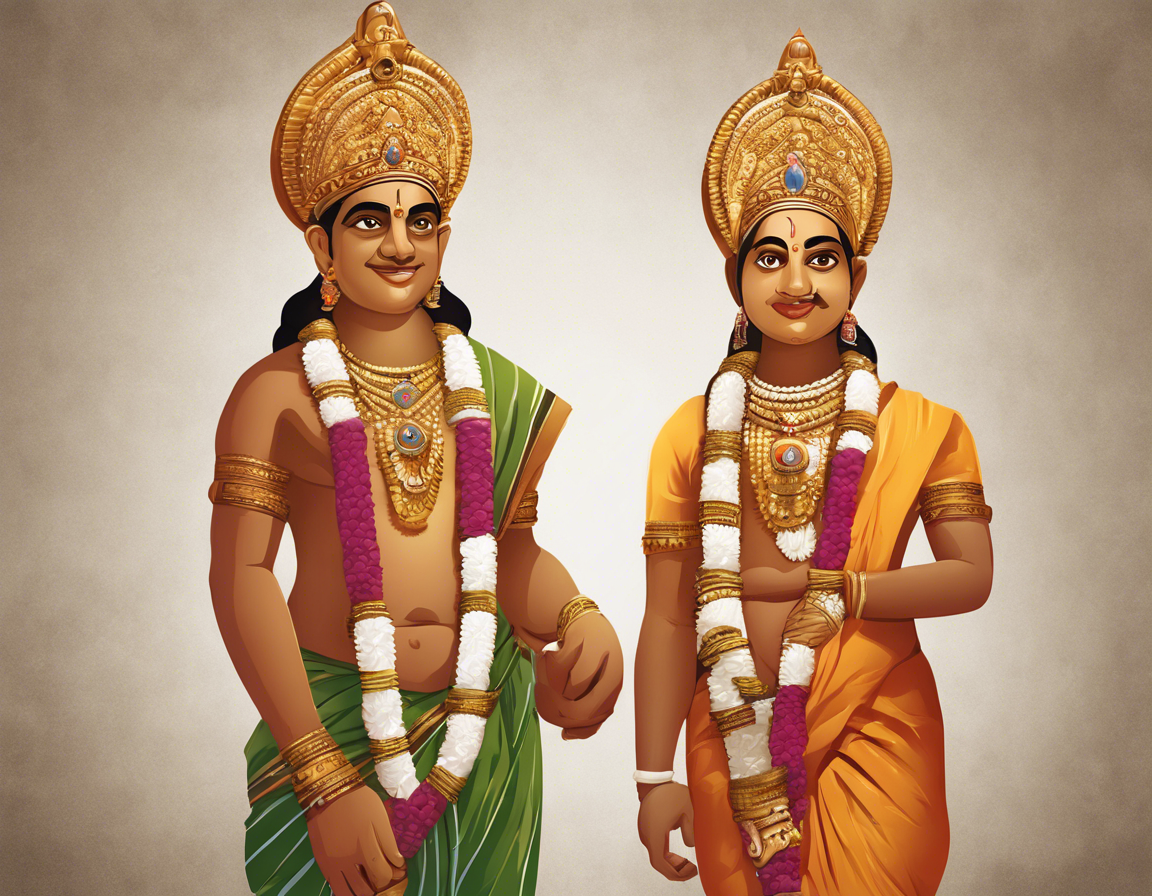Introduction
The traditional dance form of Kerala, Guruvayoor Ambalanadayil, is a divine journey that captivates audiences with its unique blend of rhythm, grace, and storytelling. Originating from the sacred temple town of Guruvayoor, this art form is deeply rooted in Hindu mythology and folklore, making it a vibrant celebration of culture and spirituality.
The Origin Story
Legend has it that Guruvayoor Ambalanadayil was born out of a divine inspiration received by the temple priests at Guruvayoor Sree Krishna Temple. The dance form was conceptualized as a way to pay homage to Lord Krishna, the presiding deity of the temple, through artistic expression. Over time, Guruvayoor Ambalanadayil evolved into a sophisticated art form with intricate choreography, elaborate costumes, and soul-stirring music.
Elements of Guruvayoor Ambalanadayil
Guruvayoor Ambalanadayil is characterized by its unique blend of Bharatanatyam, Kathakali, and Mohiniyattam styles, creating a mesmerizing fusion of movements, expressions, and emotions. The dance typically revolves around epic stories from Hindu mythology, with performers embodying various gods, goddesses, and mythical characters through their movements and gestures.
Costumes and Accessories
One of the most striking aspects of Guruvayoor Ambalanadayil is its elaborate costumes and accessories, which play a crucial role in bringing the characters to life on stage. Performers are often adorned in richly embroidered sarees, ornate jewelry, and traditional headpieces that add to the visual splendor of the performance. Additionally, makeup techniques inspired by Kathakali and Mohiniyattam are used to enhance facial expressions and convey emotions effectively.
Musical Accompaniment
Music forms an integral part of Guruvayoor Ambalanadayil, providing a rhythmic framework for the dancers to showcase their skills. The traditional instruments used in this dance form include mridangam, chenda, edakka, and flute, creating a dynamic soundscape that complements the movements on stage. The melodic compositions, known as padams and varnams, add depth and emotion to the performance, elevating the storytelling aspect of Guruvayoor Ambalanadayil.
Training and Practice
Mastering the art of Guruvayoor Ambalanadayil requires years of dedicated training and practice under the guidance of experienced gurus. Aspirant dancers learn the intricacies of body movements, hand gestures, facial expressions, and footwork, striving to achieve a perfect blend of technical precision and artistic expression. Additionally, they study the cultural significance of the dance form, delving into the rich tapestry of mythology and folklore that informs Guruvayoor Ambalanadayil.
Significance and Legacy
Guruvayoor Ambalanadayil holds a special place in the hearts of devotees and art enthusiasts alike, serving as a cultural beacon that preserves and promotes the traditional dance heritage of Kerala. By showcasing the timeless tales of gods and goddesses through the medium of dance, Guruvayoor Ambalanadayil connects audiences to their spiritual roots and fosters a sense of community and shared heritage. With its rich history, vibrant performances, and enduring legacy, Guruvayoor Ambalanadayil continues to inspire and delight audiences around the world.
FAQs
- What is the significance of Guruvayoor Ambalanadayil in Kerala’s cultural landscape?
-
Guruvayoor Ambalanadayil is a revered traditional dance form in Kerala that celebrates the state’s rich cultural and spiritual heritage. It serves as a cultural ambassador, showcasing the intricate artistry and storytelling traditions of the region.
-
How does Guruvayoor Ambalanadayil differ from other classical dance forms in India?
-
Guruvayoor Ambalanadayil is unique in its fusion of Bharatanatyam, Kathakali, and Mohiniyattam elements, creating a distinctive style that sets it apart from other classical dance forms. Its focus on mythology and folklore adds a spiritual dimension to the performances.
-
What are the key characteristics of Guruvayoor Ambalanadayil costumes?
-
Guruvayoor Ambalanadayil costumes are characterized by richly embroidered sarees, ornate jewelry, and traditional headpieces that reflect the cultural aesthetics of Kerala. The use of elaborate makeup techniques enhances facial expressions and emotions.
-
How long does it take to learn Guruvayoor Ambalanadayil?
-
Learning Guruvayoor Ambalanadayil is a lifelong journey that requires years of training and practice under the guidance of experienced gurus. Dancers must master a wide range of movements, gestures, and expressions to become proficient in the art form.
-
What role does music play in Guruvayoor Ambalanadayil performances?
- Music is an essential component of Guruvayoor Ambalanadayil, providing a rhythmic backdrop for the dancers to showcase their skills. Traditional instruments such as mridangam, chenda, edakka, and flute, along with melodic compositions like padams and varnams, enhance the storytelling aspect of the dance form.
By delving into the enchanting world of Guruvayoor Ambalanadayil, one can truly appreciate the beauty, spirituality, and cultural richness that this divine dance form embodies. With its mesmerizing performances, intricate choreography, and timeless stories, Guruvayoor Ambalanadayil continues to enchant audiences and inspire a deep connection to Kerala’s cultural legacy.
